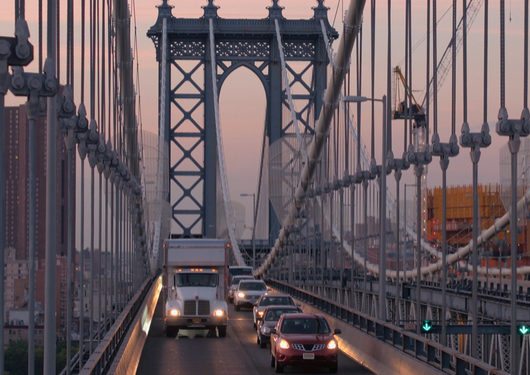
Visit Our Sponsors |
|
|
|
|
|
|
|
|
|
|
|
|
|
|
|
|
|
|
|
|
|
|
|
|
|
|
|
|
|
|
|
|
|
|
|
|
|
|

The city’s crucial marine, rail, and highway infrastructure is aging, creating a reliance on trucks to move nearly 90 percent of freight, according to the mayor’s office. “As the city’s population continues to grow and consumers increasingly demand near-instant deliveries, local freight volumes will grow an estimated 68 percent by 2045, further choking traffic and impeding commerce,” the office said.
For the “last mile” of distribution, trucks have to bring goods from port facilities and central warehouses to consumers over city streets and arteries, adding to congestion. Last year, traffic congestion cost the local economy $862m, the mayor’s office said.
The new Freight NYC plan unveiled this week outlines three key strategies for modernizing New York City’s freight distribution industry:
Investing in Multimodal Infrastructure. Working with the Port Authority of NY & NJ, the city will invest in marine terminals and barging operations, and support the modernization and expansion of rail lines and freight facilities.
Creating New Freight Distribution Hubs. Through public-private partnerships, the city will develop new distribution, warehousing, and transload facilities to meet increasing demand. This will help ensure the city can sustain the demands of its growing population, while creating secondary pathways to move goods in the event of adverse climate impact and other major disruptions.
Promoting the Use of Clean Trucks, Reinforcing 2015 Clean Fleet Goals. The city, led by the New York City Department of Transportation (NYCDOT), will encourage the deployment of emission-free trucks on city streets for last mile delivery.
RELATED CONTENT
RELATED VIDEOS
Timely, incisive articles delivered directly to your inbox.

